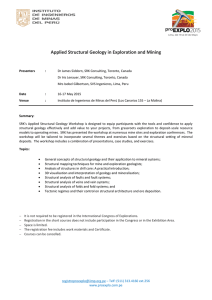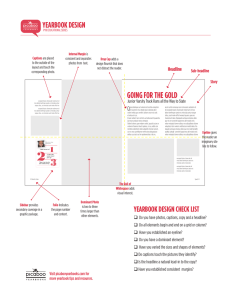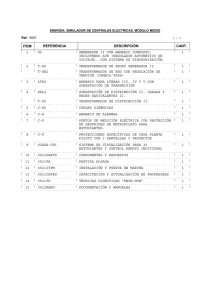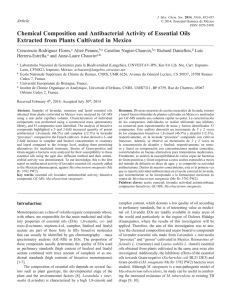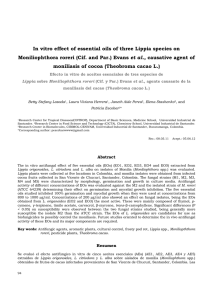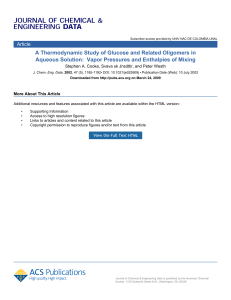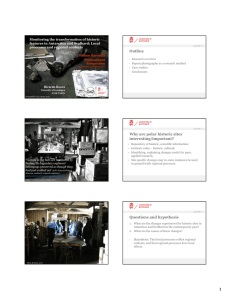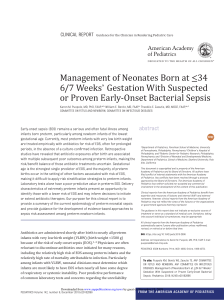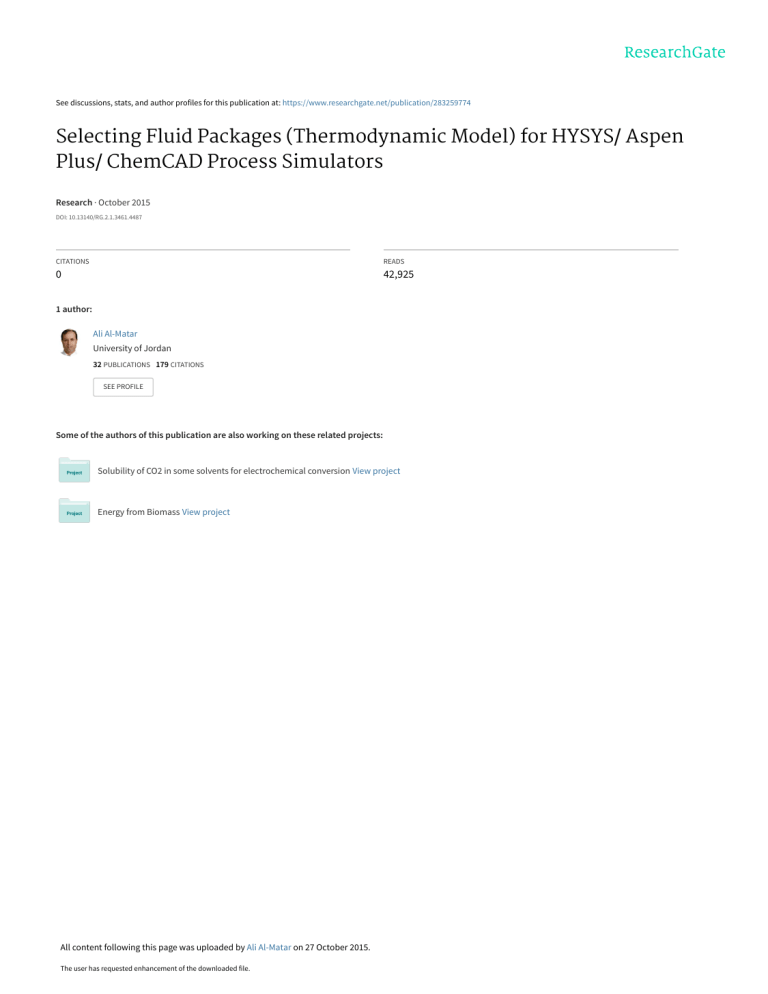
See discussions, stats, and author profiles for this publication at: https://www.researchgate.net/publication/283259774 Selecting Fluid Packages (Thermodynamic Model) for HYSYS/ Aspen Plus/ ChemCAD Process Simulators Research · October 2015 DOI: 10.13140/RG.2.1.3461.4487 CITATIONS READS 0 42,925 1 author: Ali Al-Matar University of Jordan 32 PUBLICATIONS 179 CITATIONS SEE PROFILE Some of the authors of this publication are also working on these related projects: Solubility of CO2 in some solvents for electrochemical conversion View project Energy from Biomass View project All content following this page was uploaded by Ali Al-Matar on 27 October 2015. The user has requested enhancement of the downloaded file. 10/27/2015 Selecting Appropriate Fluid Packages in HYSYS Ali Kh. Al-matar ([email protected]) Chemical Engineering Department King Fahd University of Petroleum and Minerals Dhahran, Saudi Arabia ([email protected]) Chemical Engineering Department University of Jordan Amman 11942, Jordan Outline • Importance of Selecting the Appropriate Prediction Method • Principal Steps in Selecting the Appropriate Thermodynamics Package • Sources of Information • Issues in Selection of the Appropriate Thermodynamics Package • Recommendations for the Selection of the Appropriate Thermodynamics Package – Eric Carlson’s Recommendations – Professor Seader Recommendations – Hyprotech Recommendations • Example: water and 1-propanol 2 1 10/27/2015 Importance of Selecting the Appropriate Prediction Method Correct predictions of the physical properties of the mixture as a function of temperature and pressure. Each method is suitable only for particular types of components and limited to certain operating conditions. Choosing the wrong method may lead to incorrect simulation results. Particularly important for reliable computations associated with separation operations (distillation, LL extraction, etc.). Principal Steps in Selecting the Appropriate Thermodynamics Package 1. Choosing the most suitable model/thermo method. 2. Comparing the obtained predictions with data from the literature. 3. Adding estimates for components that not available in the chosen thermo package. Can they be neglected? 4. Generation of lab data if necessary to check the thermo model. 2 10/27/2015 Sources of Information 1. Publications and professional literature that deal with the process in question or with the components that participate in the process. a) b) c) d) 2. 3. Simulator reference manual (HELP). DATABANKS a) b) 4. Journal of Chemical reference Data (NIST) Journal of Chemical and Engineering Data Journal of Chemical Thermodynamics Journal of Fluid phase Equilibria DIPPR DECHEMA (Dortmund) Rules of thumb 1. 2. 3. 4. Look for Walas’s design book Your textbook Brennan’s rules of thumb (latest edition) Turton’s Process Design textbook. Issues in Selection of the Appropriate Thermodynamics Package Hydrocarbon (HC) Polar Compounds (PC) Nature of mixture Electrolyte Pressure and temperature range Issues to consider Associating Possibility of Phase Splitting Availability of data (Binary Interaction Parameters) 3 10/27/2015 Recommendations for the Selection of the Appropriate Thermodynamics Package 1. Eric Carlson, “Don’t gamble with physical properties for simulations,” Chemical Engineering Progress, October 1996, 35-46. 2. Prof J.D. (Bob) Seader, University of Utah 3. Hyprotech Recommendations Eric Carlson’s Recommendations Figure 1: Global Perspective Elect. NRTL Electrolyte Pitzer Polar? Mixture Nonelectrolyte Figure 2 PR Real? EOS SRK Lee-Kesler-Plocker All nonpolar Chao-Seader Pressurized Pseudo and real P? Grayson-Streed Braun K-10 Vacuum Braun K-10 4 10/27/2015 Eric Carlson’s Recommendations Figure 2: Case of Polar non-electrolytes NRTL Yes UNIQUAC Yes LL? Wilson No Polar non-electrolytes < 10 bar (Figure 3) NRTL Ij? UNIQUAC No P? SchwatentruberRenon Yes > 10 bar Yes UNIFAC LLE NO UNIFAC and extensions LL? PR or SRK with Ws PR or SRK with MHV2 Ij? PSRK No PR or SRK with MHV2 Eric Carlson’s Recommendations Figure 3: Case of Vapor Phase Association Wilson with special EOS for hexamers NRTL with special EOS for hexamers Hexamers Wilson, NRTL, UNIQUAC and UNIFAC UNIQUAC with special EOS for hexamers UNIFAC with special EOS for hexamers Yes Degree of Polymerization Wilson with Hayden O’Connell or Northnagel EOS Wilson with IG or RK Vapor Phase Association NRTL with Hayden O’Connell or Northnagel EOS NRTL with IG or RK Dimers UNIQUAC with Hayden O’Connell or Northnagel EOS No UNIQUAC with IG or RK UNIFAC with Hayden O’Connell or Northnagel EOS UNIFAC (and extensions) with IG or RK 5 10/27/2015 Bob Seader’s Recommendations Bob Seader’s Recommendations Figure 4: Global Perspective Hydrocarbon (HC) Yes Yes Yes PSRK No Figure 5 Light Gases (LG) No NO Organic Polar Compounds (PC) Polar Compounds (PC) Yes Elect. NRTL No Special Yes Figure 6 No Figure 5 Electrolytes (E ) e.g., Sour Water (NH3, CO2, H2S, H2O), Aqueous amine solution with CO2 and H2S 6 10/27/2015 Bob Seader’s Recommendations Figure 5: HC and/or LG Critical HC and/or LG Cryogenic Narrow to wide Temperature range Boiling Point Range (BPR) Pressure range PR BWRS Noncritical PR PR Noncryogenic Very wide SRK Lee-KeslerPlocker (LKP) Bob Seader’s Recommendation Figure 6: HC and Polar Compounds PC NRTL HC and PC Yes Binary Interaction Parameters (BIP) Available Possible Phase Splitting (PPS) Not available UNIFAC UNIQUAC No Wilson 7 10/27/2015 Hyprotech Recommendations Hyprotech is HYSYS’s original company Example • Find the best thermodynamic package for 1-Propanol , H2O mixture. Eric Carlson, “Don’t gamble with physical properties for simulations,” Chem. Eng. Prog. October 1996, 35-46 Prof J.D. (Bob) Seader, University of Utah 8 10/27/2015 Eric Carlson’s Recommendations Figure 1: Global Perspective Elect. NRTL Electrolyte Pitzer Polar? Mixture Nonelectrolyte Figure 2 PR Real? EOS SRK Lee-Kesler-Plocker All nonpolar Chao-Seader Pressurized Pseudo and real Grayson-Streed P? Braun K-10 Vacuum Braun K-10 Eric Carlson’s Recommendations Figure 2: Case of Polar non-electrolytes NRTL Yes UNIQUAC Yes LL? Wilson No Polar non-electrolytes < 10 bar (Figure 3) NRTL Ij? UNIQUAC No P? SchwatentruberRenon Yes > 10 bar Yes UNIFAC LLE NO UNIFAC and extensions LL? PR or SRK with Ws PR or SRK with MHV2 Ij? PSRK No PR or SRK with MHV2 9 10/27/2015 Bob Seader’s Recommendations Figure 4: Global Perspective Hydrocarbon (HC) Yes Yes Yes PSRK No Figure 5 Light Gases (LG) No NO Organic Polar Compounds (PC) Polar Compounds (PC) Yes Elect. NRTL No Special Yes Figure 6 No Figure 5 Electrolytes (E ) e.g., Sour Water (NH3, CO2, H2S, H2O), Aqueous amine solution with CO2 and H2S Bob Seader’s Recommendation Figure 6: HC and Polar Compounds PC NRTL HC and PC Yes Binary Interaction Parameters (BIP) Available Possible Phase Splitting (PPS) Not available UNIFAC UNIQUAC No Wilson 10 10/27/2015 100 98 96 PRSV NRTL UNIQUAC Wilson GCEOS Experimental 94 Temperature (°C) 92 90 88 86 84 82 80 0 0.1 0.2 0.3 0.4 0.5 x1, y1 0.6 0.7 0.8 Al-Matar 0.9 1 21 Exercise • Select an appropriate fluid package for the following systems – Benzene, toluene, and xylene at P = 8 bar. – Water, NaCl. – Hydrogen, methane, benzene and toluene. 22 11 10/27/2015 23 View publication stats 12

